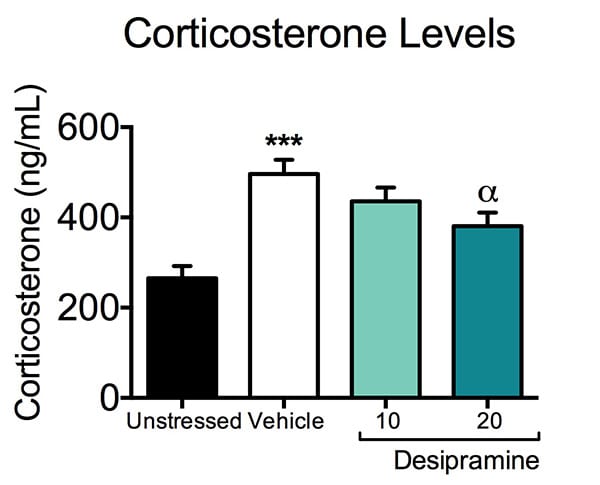Corticosterone Assay
Discover how Melior’s unique phenotypic screening platforms can uncover the untapped value of your candidate therapeutic
The chronic mild stress (CMS) model is a paradigm developed in animals to model the relatively minor and unanticipated irritants that lead to a state of anhedonia (an inability to experience pleasure) in some individuals.
Melior has developed a chronic mild stress paradigm that leads to increased behavioral depression and elevated corticosterone levels in rodents. Other parameters that can be evaluated in the CMS model include Coat Assessment, Hyperthermia, Sucrose Intake, and behavior modification such as seen in the Tail Suspension Test. These changes can be attenuated by treatment with an antidepressant.
Ready to get started or looking for a custom model?
Contact us today for more information about our bespoke research models and to discuss how we can help you answer your unique research questions.
The data above illustrates corticosterone levels following a seven-week chronic mild stressor.
Vehicle-treated mice exhibited significant increases in corticosterone levels compared to unstressed animals. Animals treated with desipramine, a tricyclic antidepressant, significantly decreased corticosterone levels compared to vehicle-treated animals and were not statistically increased compared to unstressed animals. This data demonstrates a rodent model of chronic mild stress that can be reversed with desipramine treatment.
Data are mean ± SEM; ***p<0.001compared to unstressed, α p<0.05 compared to vehicle. (N=10).
The Chronic Mild Stress model is generally run over about a 4 – 5 month period. Due to the higher variability in evaluated parameters, ideal group sizes are >12 animals.




 Interested in running a Chronic Mild Stress study?
Interested in running a Chronic Mild Stress study?